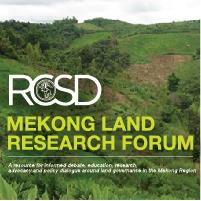Resource information
INTRODUCTION: What is property? What do rights to property cover and what are their limits? To whom do these rights belong? In an era where everything can become a commodity, be branded, trademarked and copyrighted, disputes over property and property rights uncover tensions at every level of society, between and among different levels of the state and various social configurations, from individuals to neighborhoods and whole villages. Disputes over property are also disputes between competing social goods and values. Projects that improve a country’s infrastructure for the benefit of the many may infringe on the rights of the few to enjoy their property. Attempts to preserve scarce resources may reduce or eliminate altogether hitherto public access to them. Communally held property is no longer recognized under new legal regimes. Community norms clash with national laws; market value fails to align with moral values. In societies that undergo profound change in political regimes such as countries that transitioned into and/or out of socialism, and/or rapid economic growth issues such as these are made visible more often than in societies with more stable political regimes and economic systems. Vietnam, which, within the span of a century, has experienced colonial rule (and prior to that imperial rule), socialism (in the North), a limited free market economy (in the South) and most recently a market-driven economy combined with a one party political system, offers an excellent opportunity for exploring some of these tensions. When Marxist terminology was first introduced into Vietnam, the term proletariat—working class—was translated into “propertyless.” It applied equally to landless peasants, who constituted the overwhelming majority of the population, as to the far smaller number of workers. All that peasants and workers had was their labor; but even this was not entirely their own. It could be indentured to private landowners or conscripted by the state, whether imperial, colonial, or socialist. Today, labor continues to be a Vietnamese peasant’s chief asset, as can be seen in the number of Vietnamese guest workers in Europe, the Middle East and in various countries of East Asia. Some of that labor is coerced and forms part of the phenomenon of human trafficking. At the same time, as in many other countries, practically anything, whether tangible or intangible, can be turned into a marketable commodity. In the process, it becomes detached from its origins, its meaning and its place in its community transformed by forces that are increasingly translocal and even transnational. The following article by Thomas Sikor constitutes the epilogue of a volume of articles edited by Mark Sidel and Hue-Tam Ho Tai arising from a conference on property and property rights in Vietnam held at Harvard University in May 2009. Sikor is particularly concerned with the way power and property are mutually constituted through the operations of the state, society and the market.


